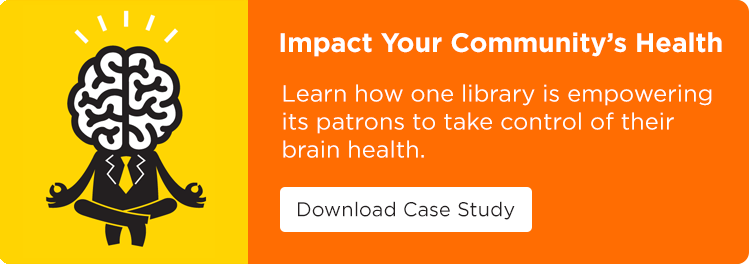
80+ Resources Your Library Can Offer Beyond Just Books
Library Card Sign-up Month, celebrated every September since 1987, is designed to remind all community members of the invaluable resources the library offers to aid them in lifelong learning. It’s also the perfect time to start taking stock of your library’s offerings and consider adding even more resources throughout the year — some that you may not have thought of before.
While many people still think of libraries primarily as repositories of books or places for research, today many libraries provide access to an array of “nontraditional” resources meant to enrich the lives of their community members in many ways. What’s more, many of these items can be accessed remotely or taken home on loan. Providing a “library of things” can not only encourage patron engagement, but also support the library in other ways, such as spurring partnerships with community organizations.
Interested in offering something new at your library? Take a look at our list of 80+ things that libraries across the country are circulating — you’re sure to find ideas that not only fit your library’s budget but that patrons will be excited to discover.
Audiovisual Equipment
Give patrons a chance to tinker with tech, both old-school and modern, by offering a range of audiovisual equipment for their use. A few electronics that you might consider offering include
- Cassette-to-digital converters
- Digital cameras
- DVD players and VCRs
- GoPro cameras and accessories
- Indoor HD antennas
- Portable external CD/DVD drives
- Portable record players
- Projectors
- Roku streaming players
Clothing
Libraries like the Queens Public Library in New York City and the Paschalville branch of the Free Library of Philadelphia offer ties for checkout in their “tiebraries.” This service is especially useful for patrons who want to look sharp for job interviews. Other types of clothing that you might offer include
- Halloween costumes
- Prom dresses
- Santa suits
- Winter coats
Cooking
The cost of cooking tools — and a lack of space to store them — limits what many of us can do in our kitchens. Libraries can help by lending cooking utensils to patrons, such as
- Cake decorating accessories
- Cake pans
- Cookie cutters
- Fondue sets
- Food dehydrators
- Food processors
- Rolling pins
- Stand mixers
Crafting Tools
You may have a makerspace in your library, but you can also help patrons explore their crafty sides at home by providing access to
- Button makers
- Die cutting machines/cartridges
- Knitting needles
- Label makers
- Laminators
- Lap looms
- Rubber stamps
- Sewing machines
Games and Toys
If your library doesn’t already circulate games and toys, board games are an easy place to start. A high-demand trend across many age groups, board games teach many valuable skills, such as teamwork, creative thinking, math and problem-solving. Other games and toys your library might circulate include
- Bocce ball sets
- Bubble machines
- Checkers sets
- Dolls
- Puppets
- Puzzles
- Virtual reality devices
Gardening
Five libraries in Dane County, Wisconsin, offer seed packets for check out. Patrons are asked to return any harvested seeds back to the library, thus creating a sustainable library-based seed bank. You don’t have to stop with seeds, though. Provide patrons with all they need to grow plants, such as
- Electronic soil testers
- Garden plots
- Gardening tools
Health Tools
Nicholson Memorial Library System (TX) is just one of hundreds of public libraries that provide their patrons with access to BrainHQ™, an online brain-training system designed to improve brain health and quality of life. Cardholders can access this cognitive health-promoting tool just as they would any other digital resource the library offers.
According to Katie Mills, the library’s Electronic Resources Librarian, this is an especially useful resource since it’s valuable for community members of all ages: “There’s a whole world of people out there who don’t have memory loss who can benefit greatly from BrainHQ,” she says. Learn more about how Nicholson Memorial Library System leverages BrainHQ in this case study.
Other community health-focused items libraries can check out to patrons include
- Blood pressure cuffs
- Fitness trackers and watches
- Heart rate monitors
Home Improvement Tools
Home improvement and maintenance tools can be expensive, and individuals might need a tool only once for a particular project. In California, Oakland Public Library’s Tool Lending Library features nearly 5,000 items that help homeowners and renters save money by sharing resources. Start your own tool library with handy items such as
- Demolition hammers
- Drain snakes
- Heavy-duty extension cords
- Roomba vacuuming robots
- Saws
- Snow shovels
- Spotlights
- Sunlight calculators
- Trimmers
- Water saver usage meters
Music
Help your community members discover their love for music and hone their skills by providing access to musical instruments and equipment. If you have soundproof rooms, you might also give them a place to practice! Items to consider include
- Banjos
- DJ and music production equipment
- Guitars
- Mandolins
- Ukuleles
Outdoor Hobbies and Sports
Libraries in Rutland County, Vermont, have teamed up with the Vermont Department of Health to offer snowshoes to their patrons for checkout. Not only are they fun, snowshoes also help improve community health by encouraging patrons to stay active during the long winter months. Additional items that encourage outdoor activity include
- Bikes and bike helmets, repair kits, and locks
- Croquet sets
- Fishing poles and tackle boxes
- Frisbee golf sets
- Hiking gear
- Life jackets
- Skis
- Sleds
- Tents and camp stoves
- Umbrellas
- Wiffle ball sets
People and Places
Your library doesn’t have to stop at offering tangible items. Give patrons experiences by partnering with local museums and parks to offer passes available for checkout. Another concept that has gained popularity is the “living library,” a special event that gives patrons the opportunity to “check out” an individual who has volunteered to talk about a specific topic or their personal experience for a set time. This type of event is a great way to foster learning and greater community interaction. Your “living library” might feature
- People from various professions, such as nurses, tax/legal experts, local business owners
- College students (this is a great way for high school students to learn about college life)
- Local historians
Science
In Anchorage, Alaska, the Alaska Resources Library and Information Services (ARLIS) checks out animal skeletons, pelts and skulls, as well as mounted birds and fish (all in glass cases, of course). While this is a specialized collection popular with local educators, artists, Scout leaders and others interested in wildlife and taxidermy, your library can encourage patrons to pursue their love of science and nature by checking out items of interest in your community, such as
- Bird watching kits
- Birdsong scanning wands
- Microscopes
- Models of body parts
- Portable planetariums
- Simple robotics
- Telescopes
Technology
While our world is becoming increasingly connected, some community members are still dealing with the “digital divide,” or the gap between those who have access to computers and the Internet and those who do not. Do your part to increase accessibility for all patrons by hosting your own Technology Petting Zoo featuring the latest and greatest gadgets, such as
- Beginner computer programming kits
- E-readers and tablets
- Smartwatches
- GPS devices
- Portable scanners
- Portable Wi-Fi hotspots
Helpful Hints
There’s no wrong way to go about expanding your collection, but there are a few factors to keep in mind when deciding what items you will offer:
- Community interest: Start by brainstorming possible areas of interest in your community. Then, start small — it’ll allow you to see firsthand which nontraditional resources are of the most interest to your community members.
- Budget: Even after acquiring items, many will require maintenance, which will, in turn, require money to be set aside in your budget.
- Time: Consider how much time will be needed for planning and/or maintenance and whether volunteers will be needed. It can help to start with a digital resource like BrainHQ, since this online asset requires no upkeep — and it benefits everyone who uses it, from bakers to fishermen, kids to seniors.
Now are you feeling inspired to start a “library of things” in your own library? We hope you are! You’re just a few nontraditional items away from increasing community engagement and establishing your library as an active hub for all things entertaining and educational.
Sources
“18 weird things you can borrow from your local library,” BookRiot
“Anne Arundel pilot project to loan fishing gear from libraries generates reel interest,” The Baltimore Sun
“Library Card Sign-up Month Press Kit,” American Library Association
“The Library of Things,” American Libraries
“Library of Things Collection Development and Circulation Policy,” Cary Memorial Library
“Snow shoes in the library? Check them out,” Mountain Times
“Sow & Grow: Gardening Program,” Madison Public Library
“The Ultimate List of Nontraditional Items You Can Check Out From Libraries,” 5 min Librarian




